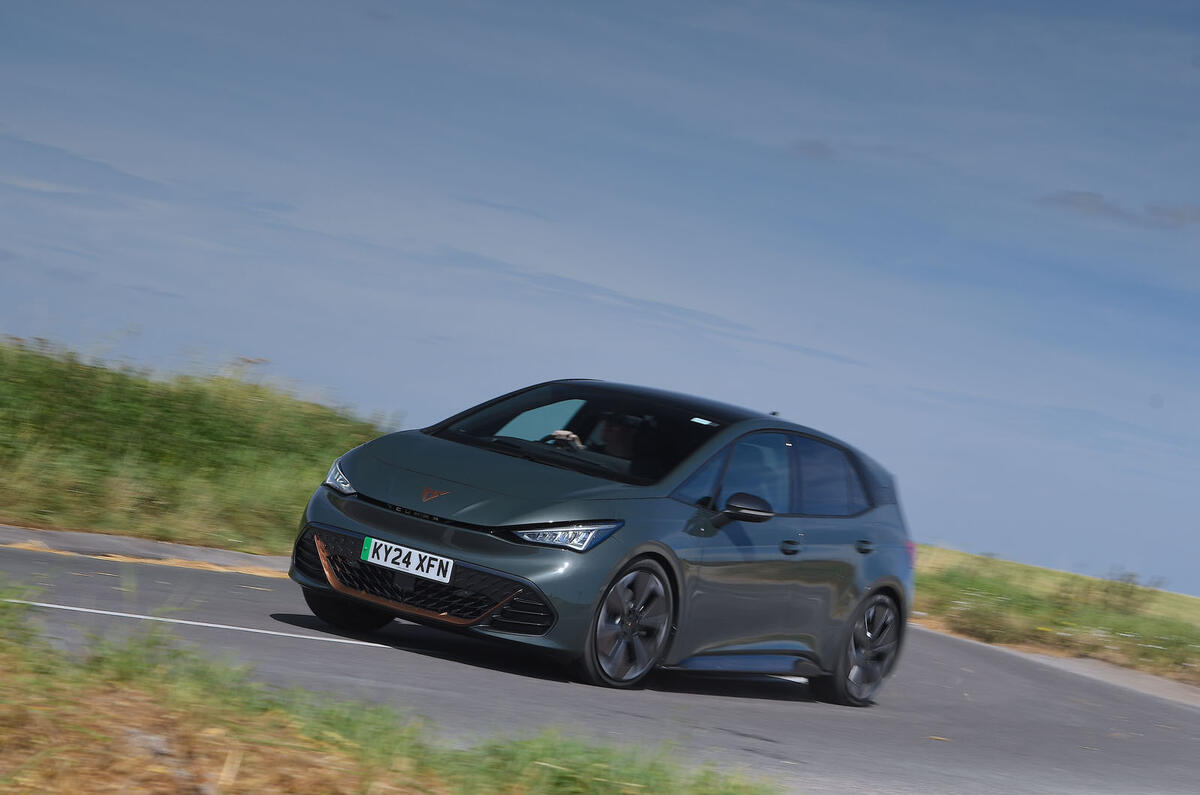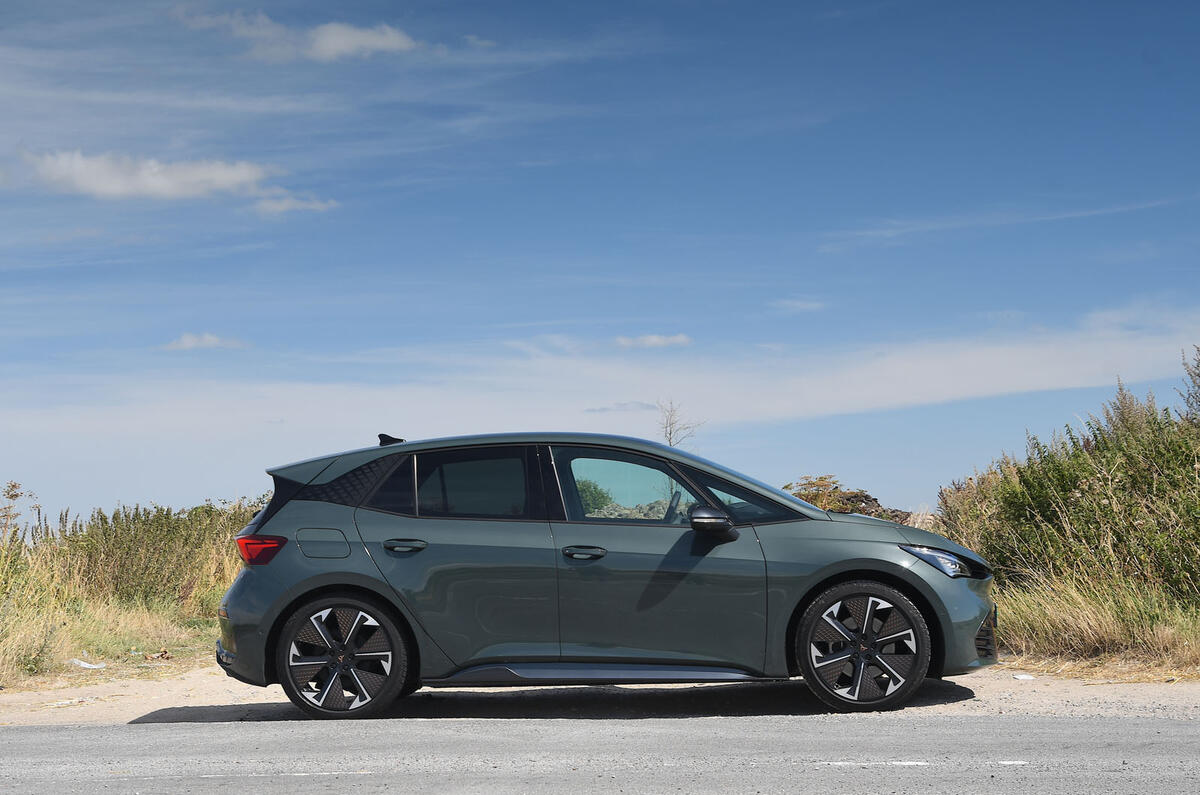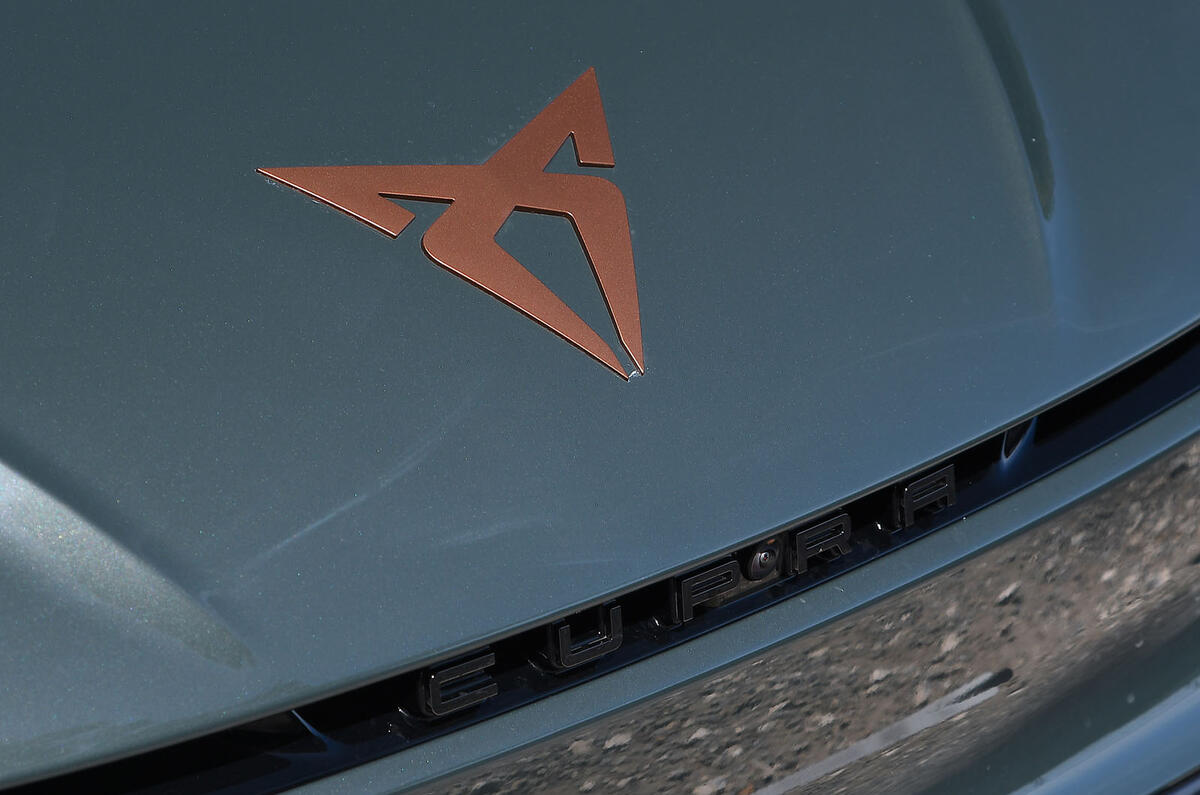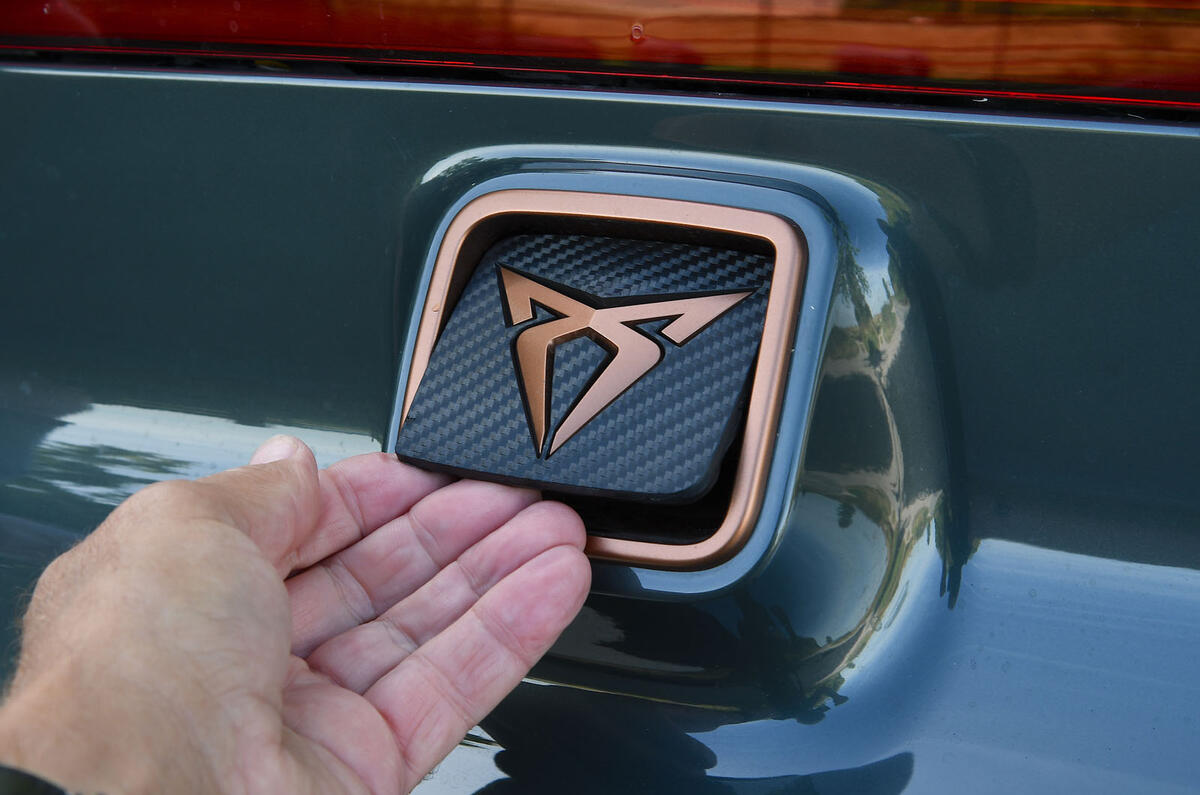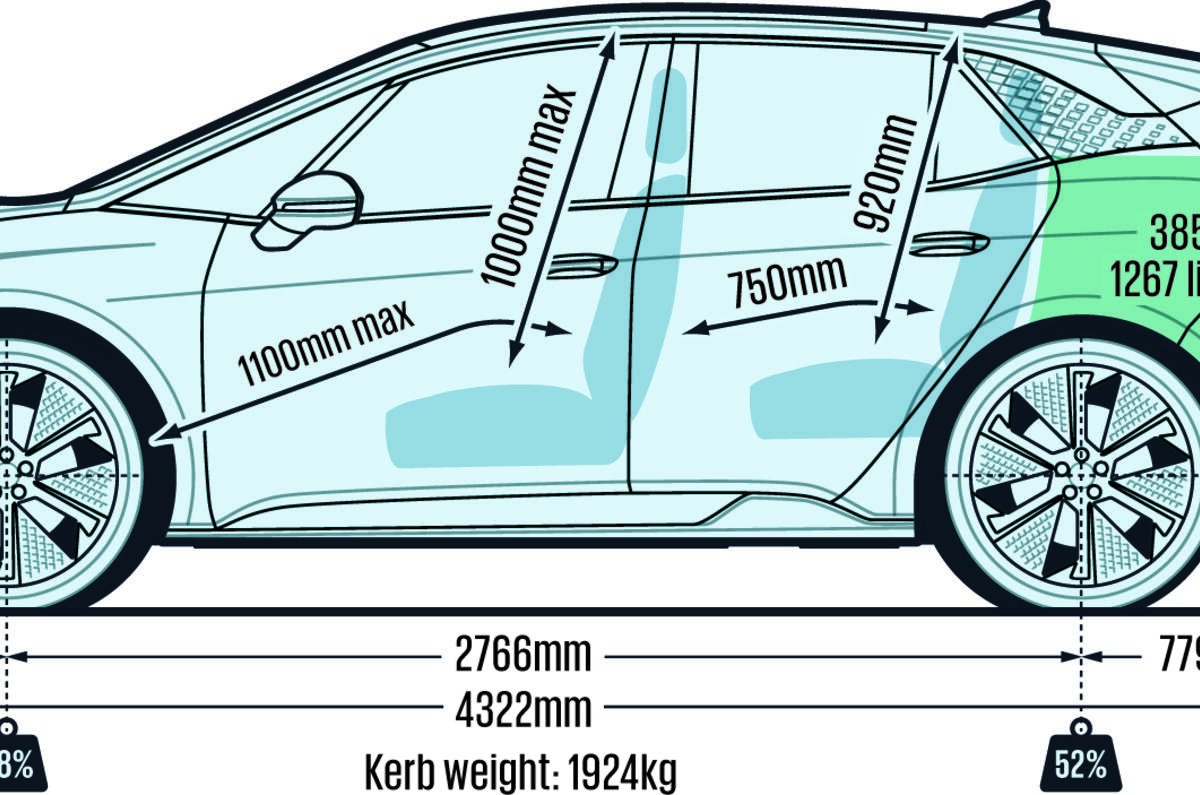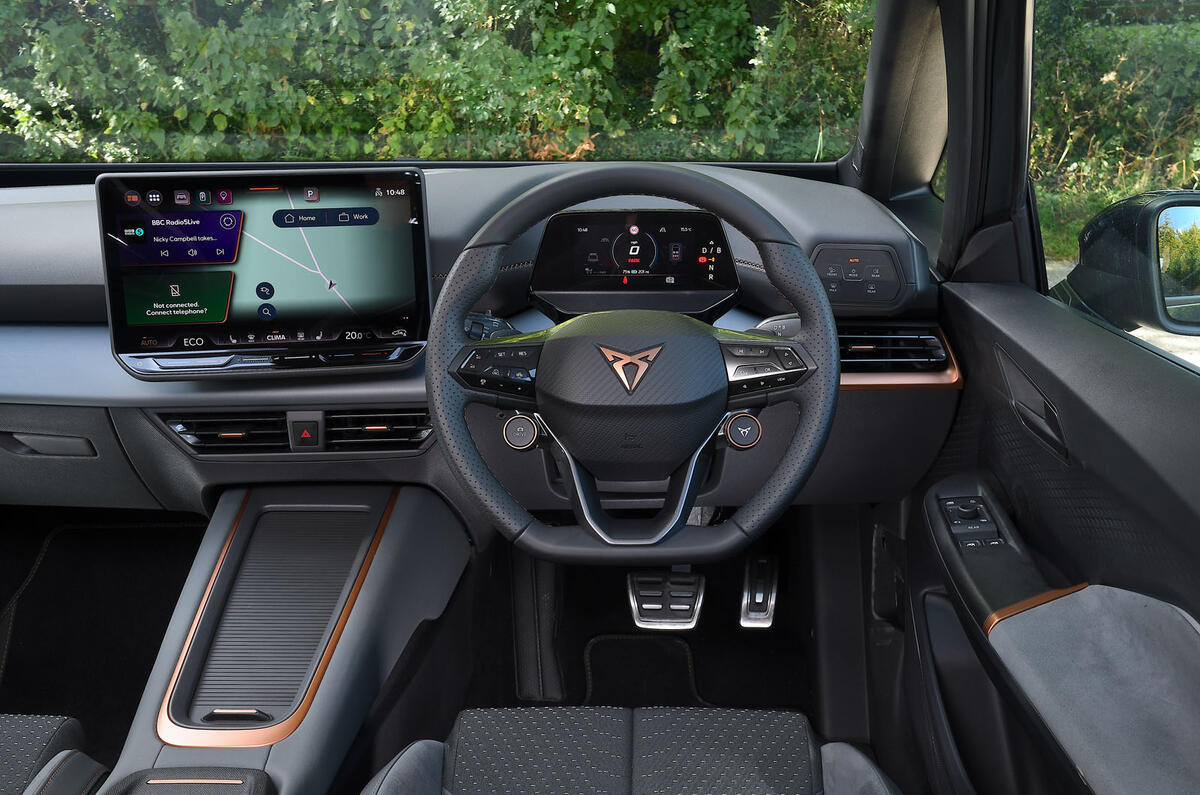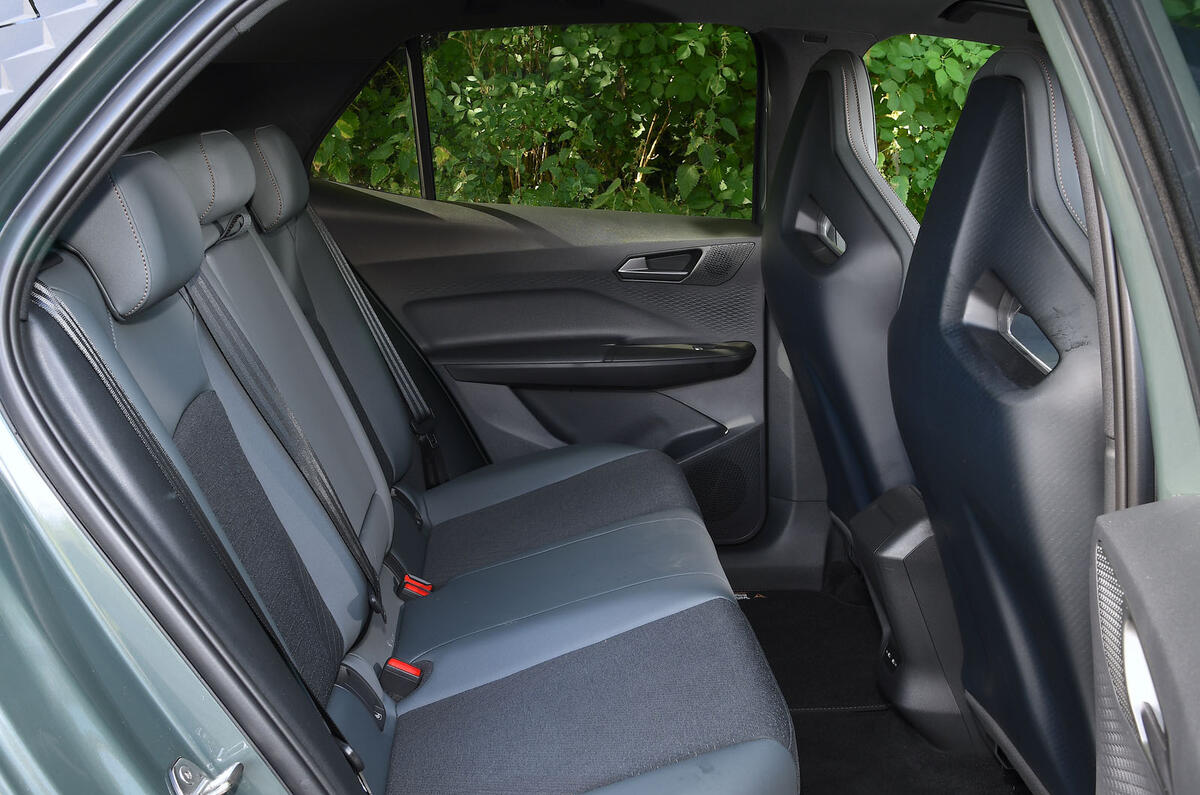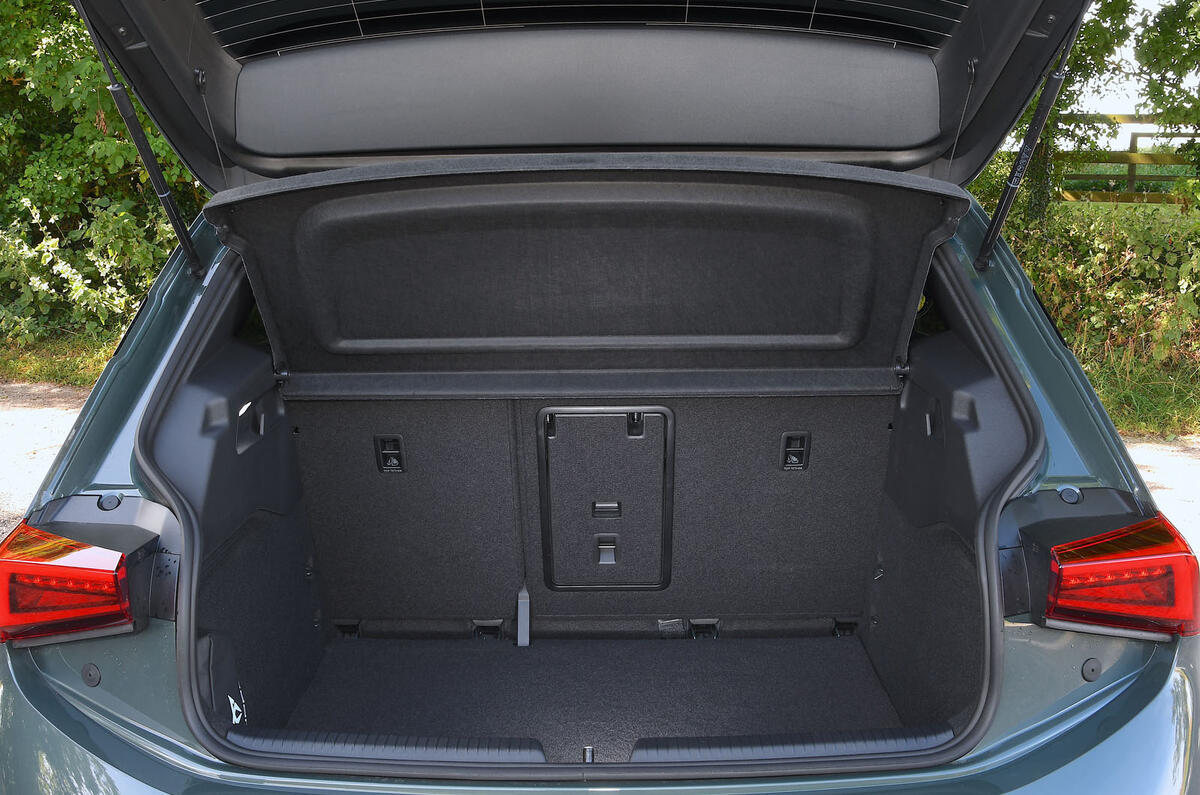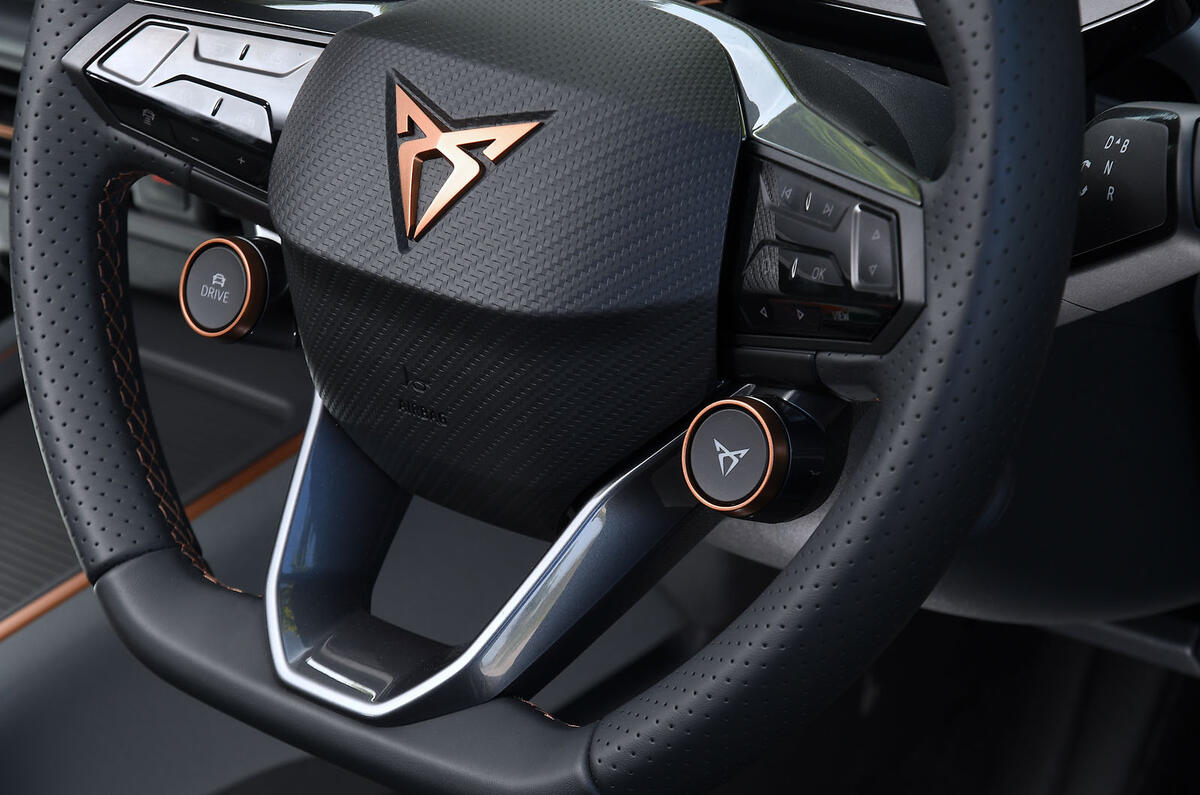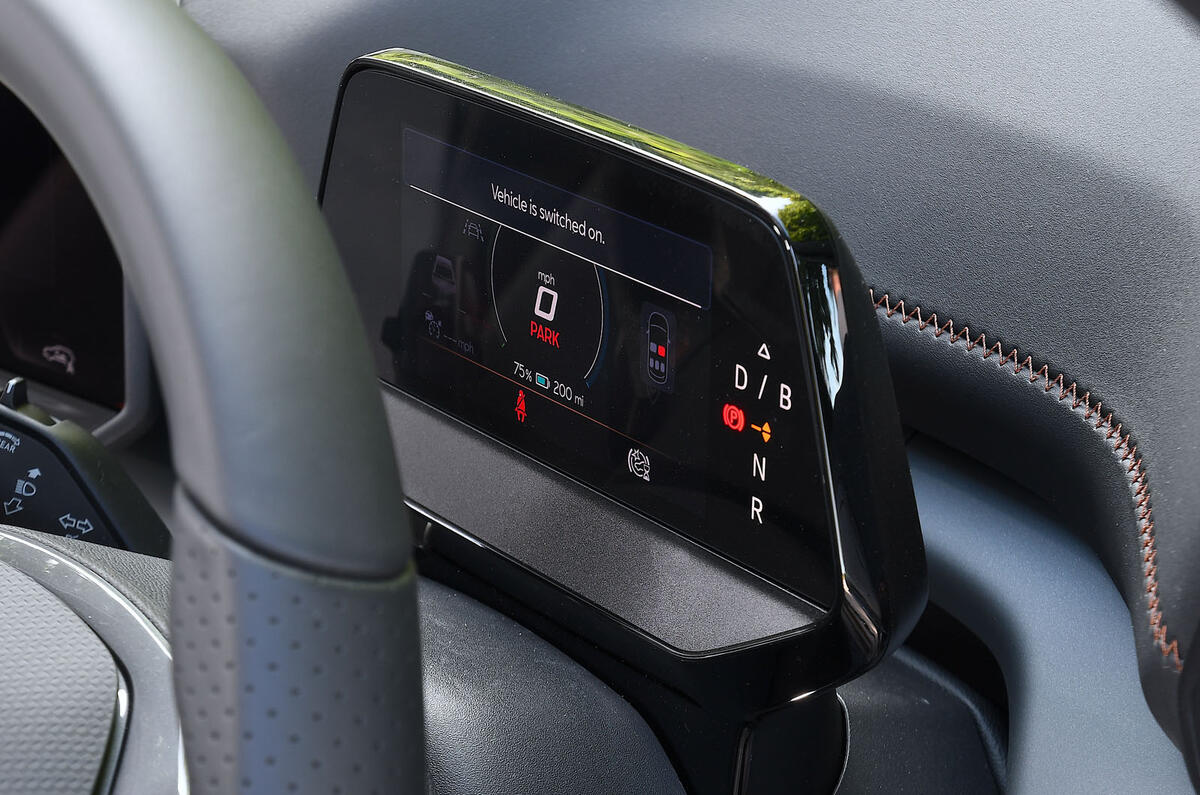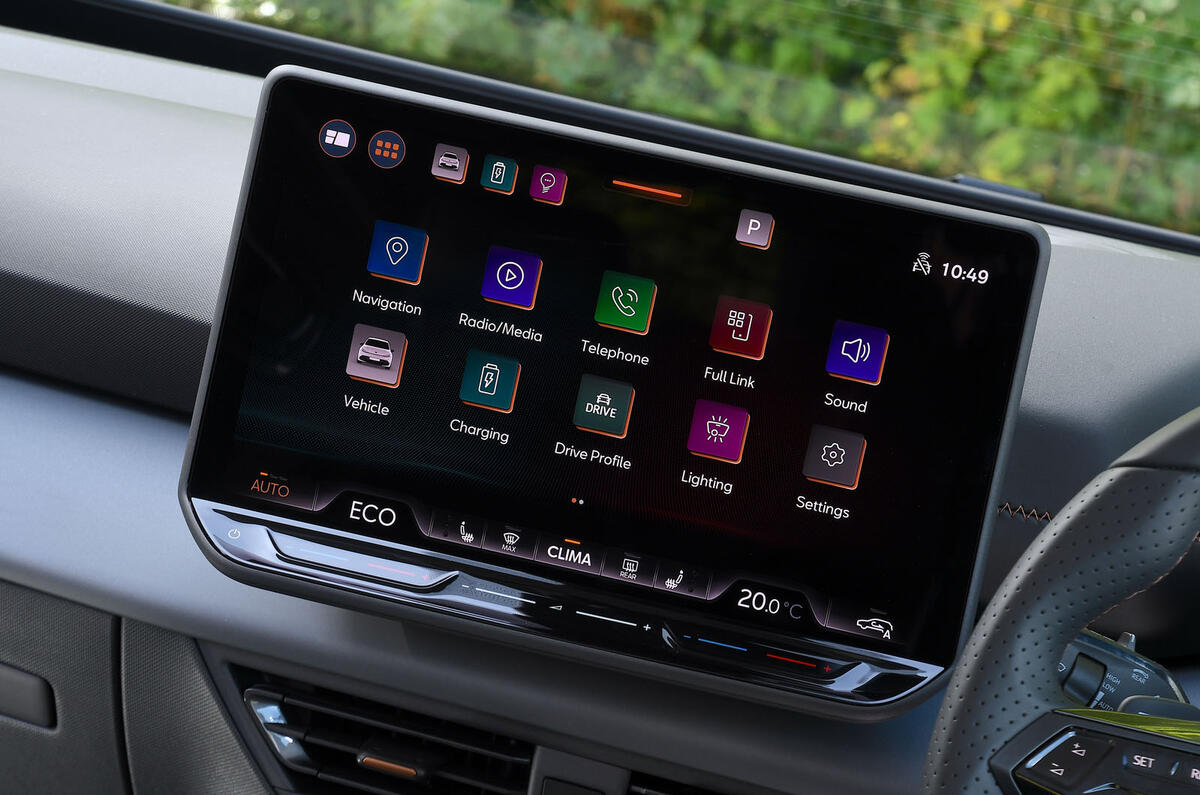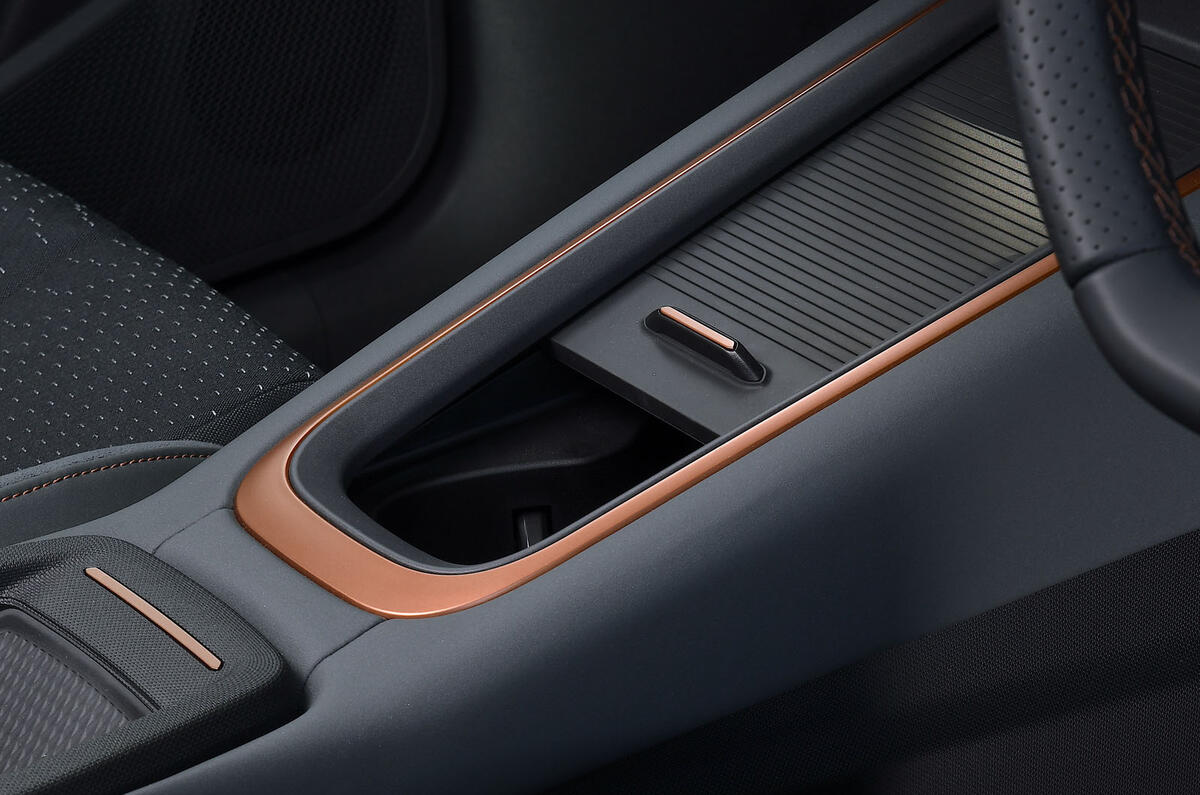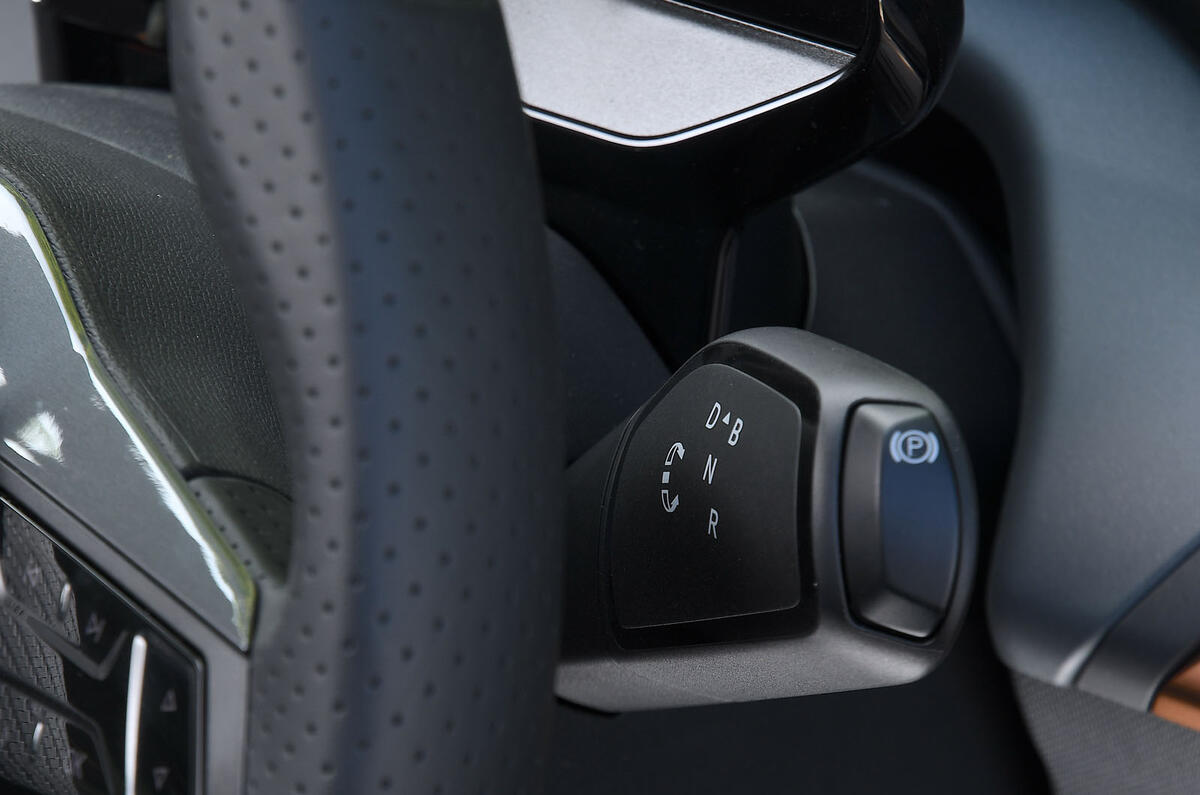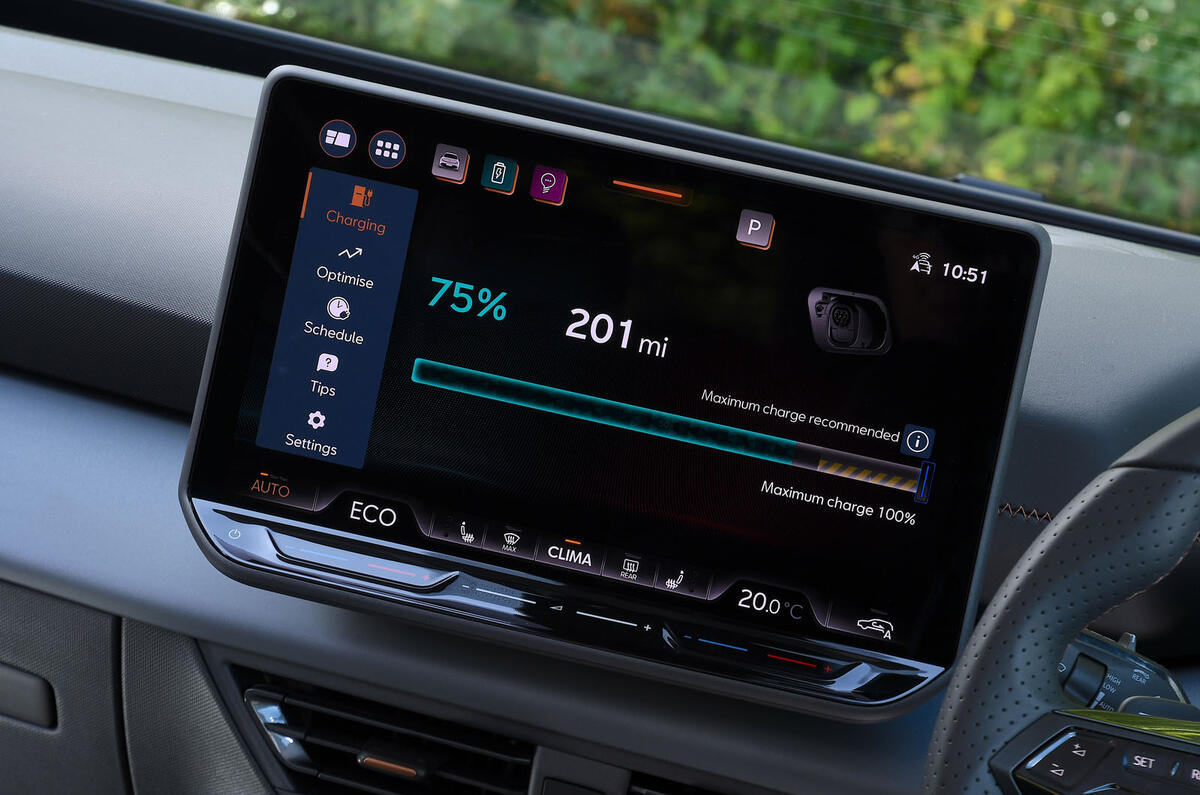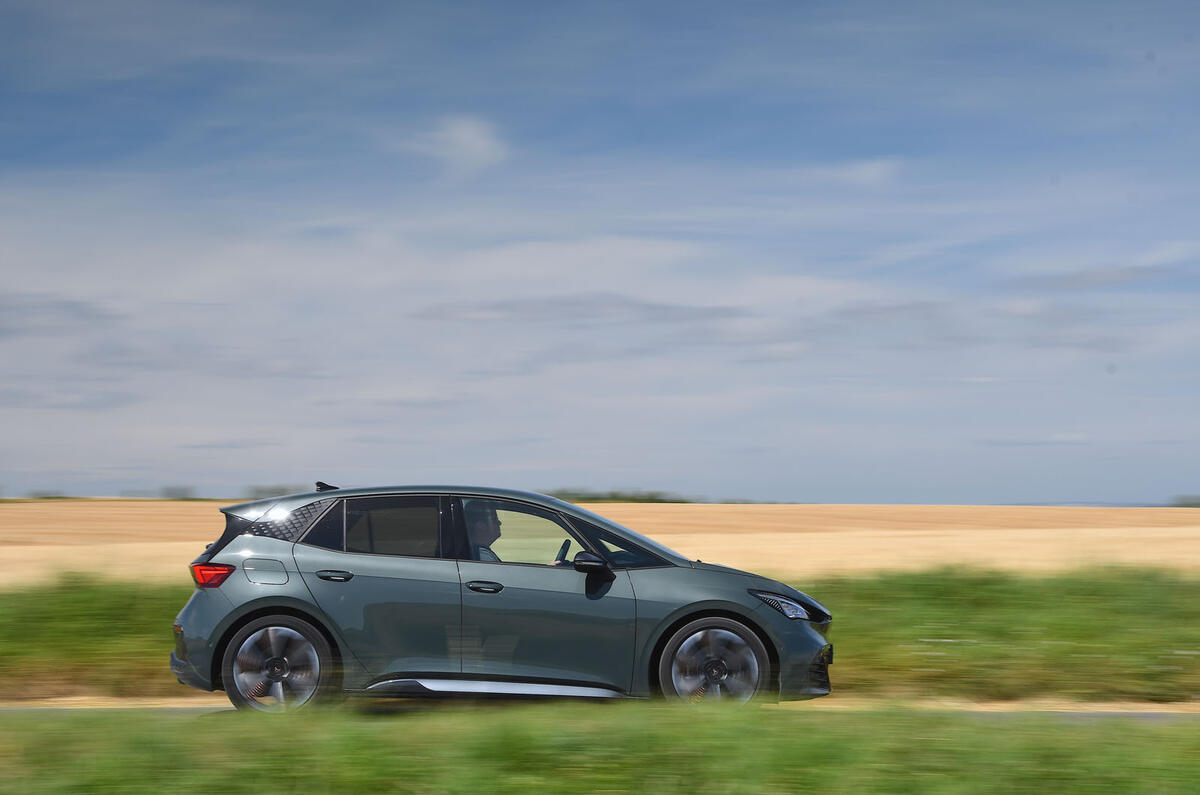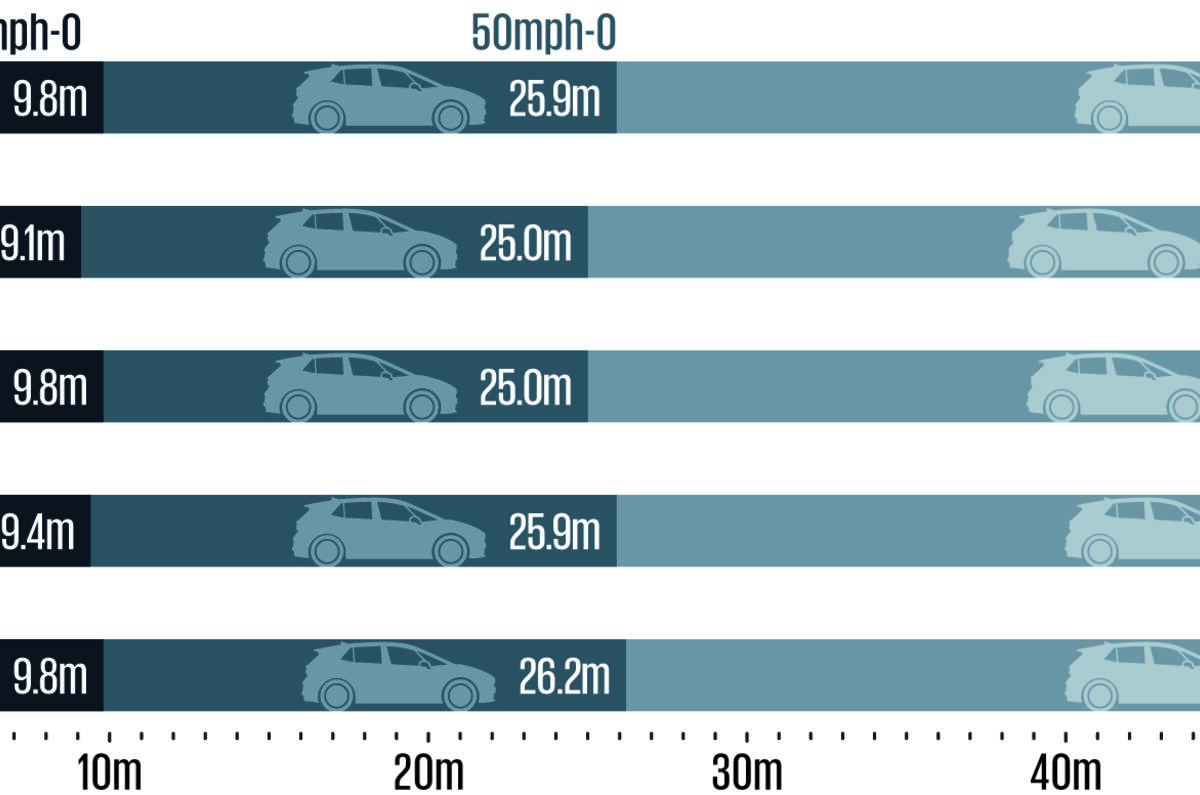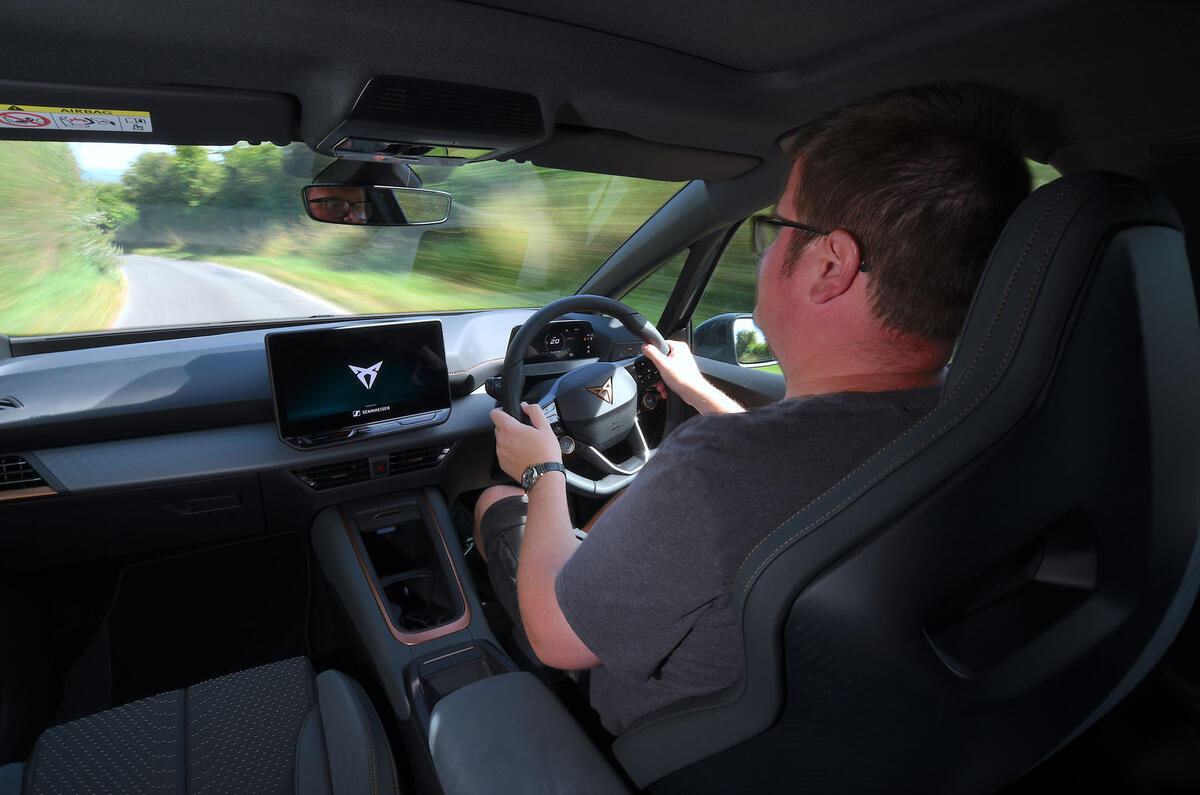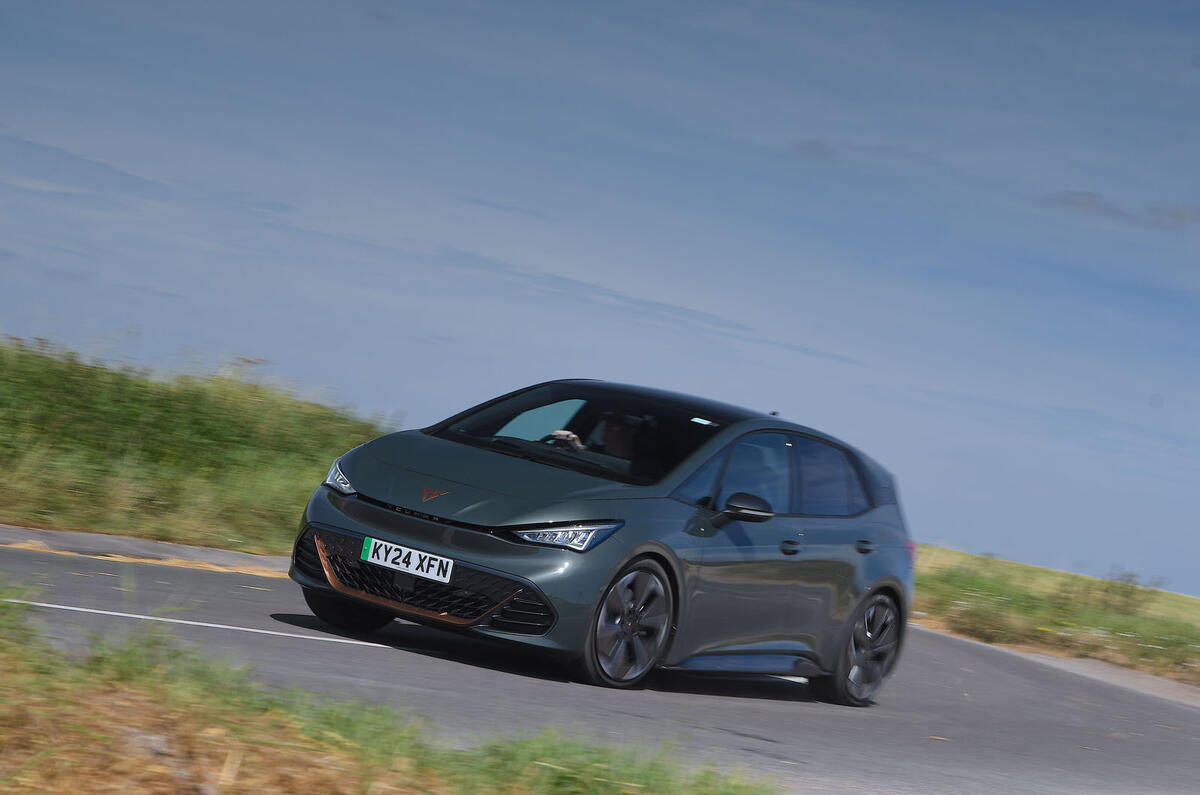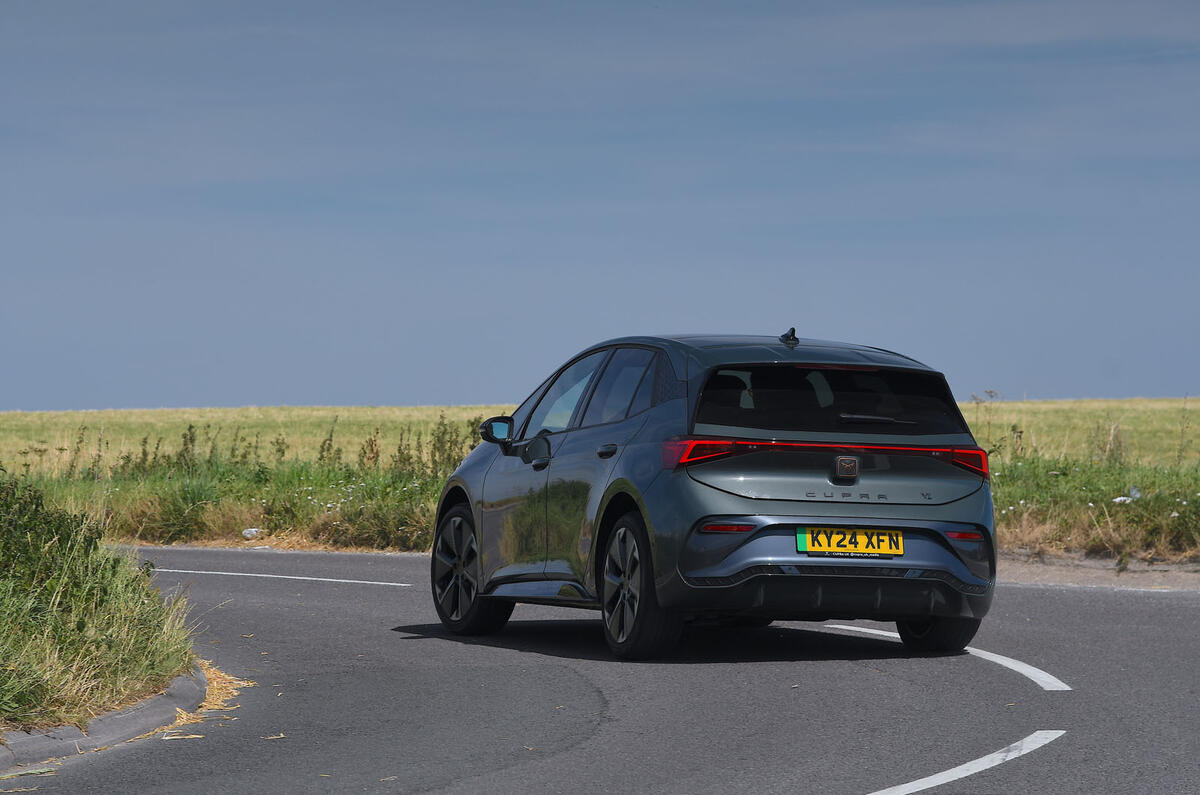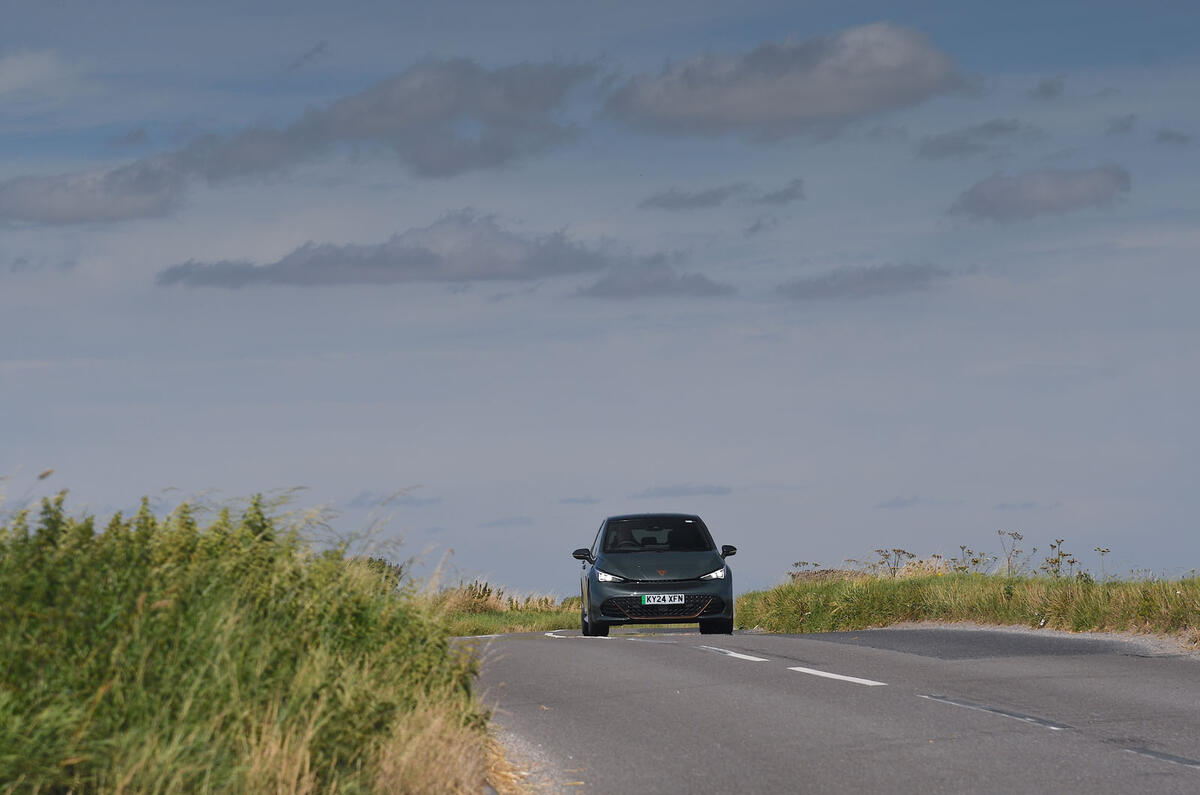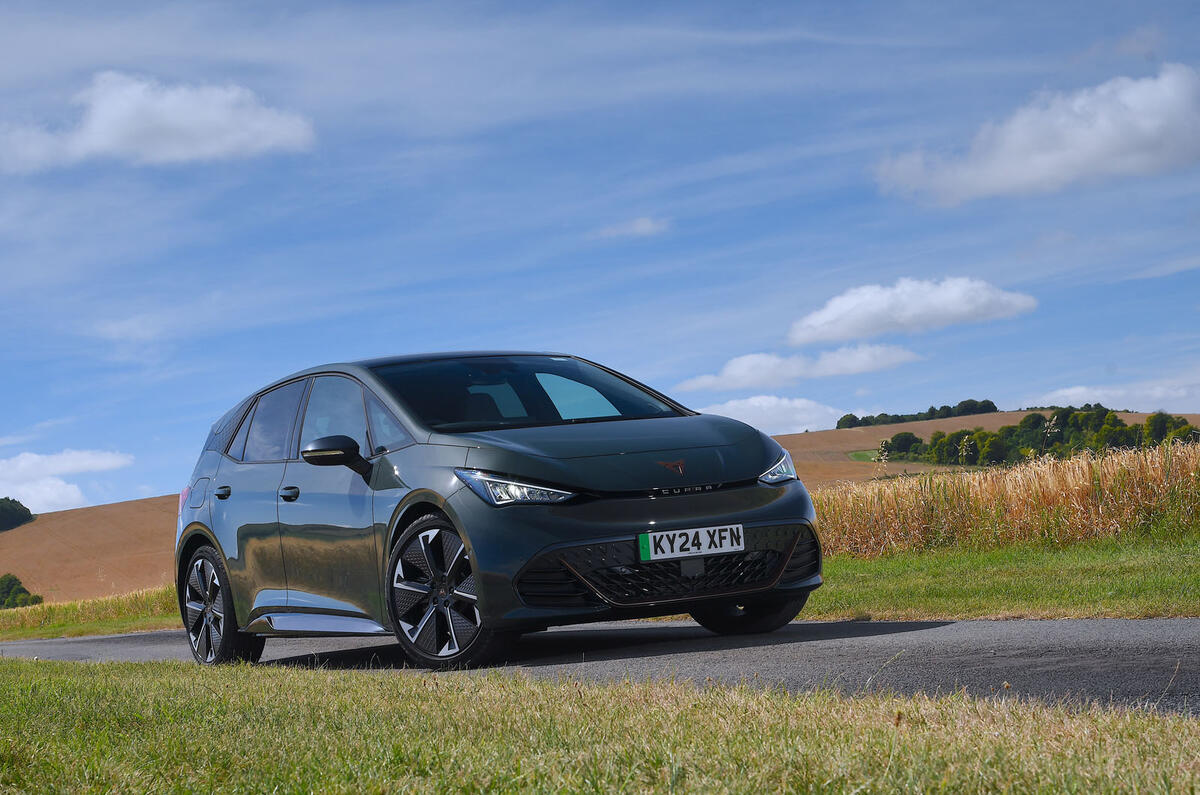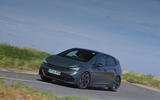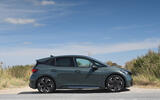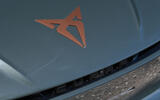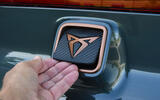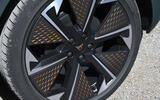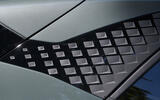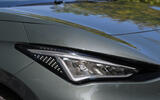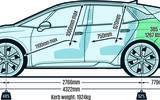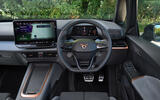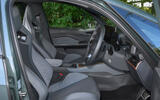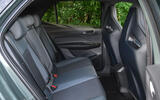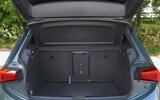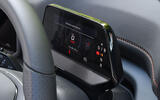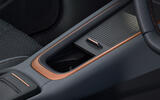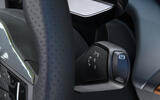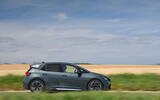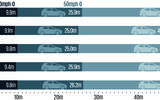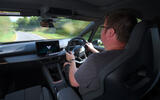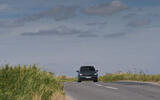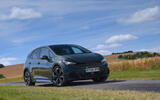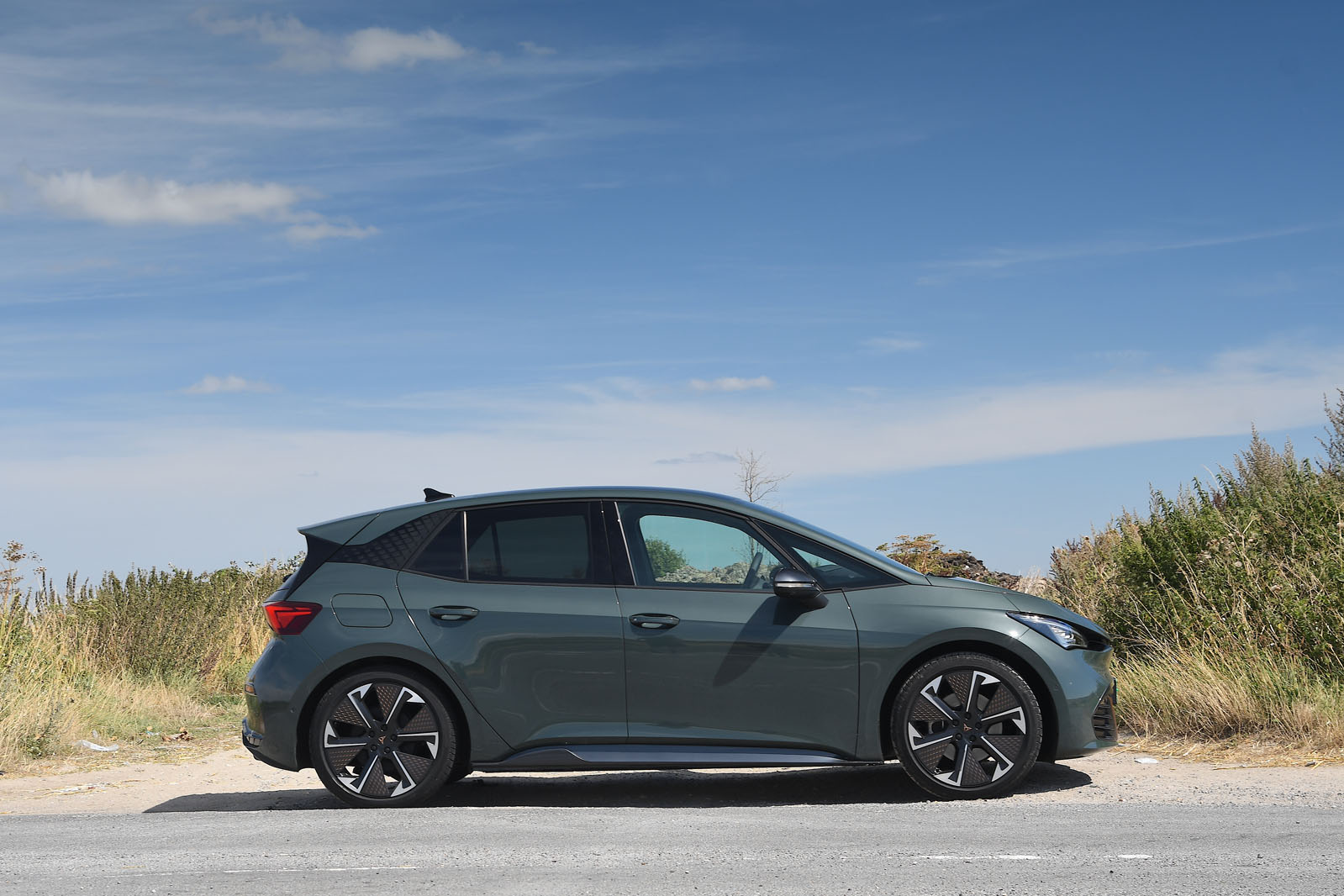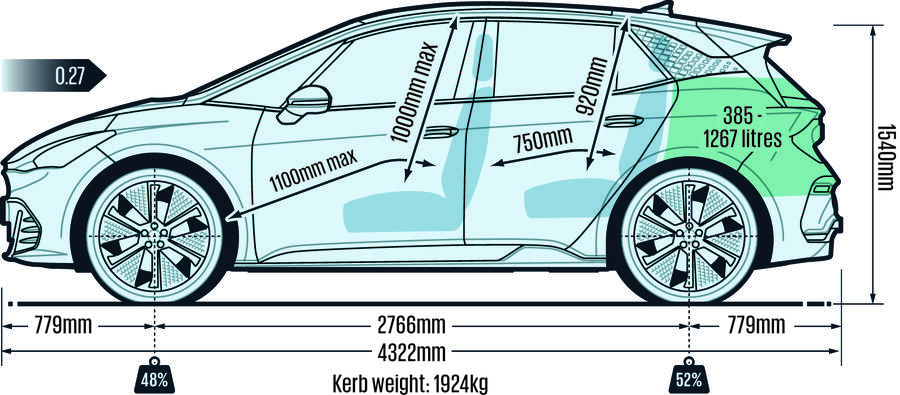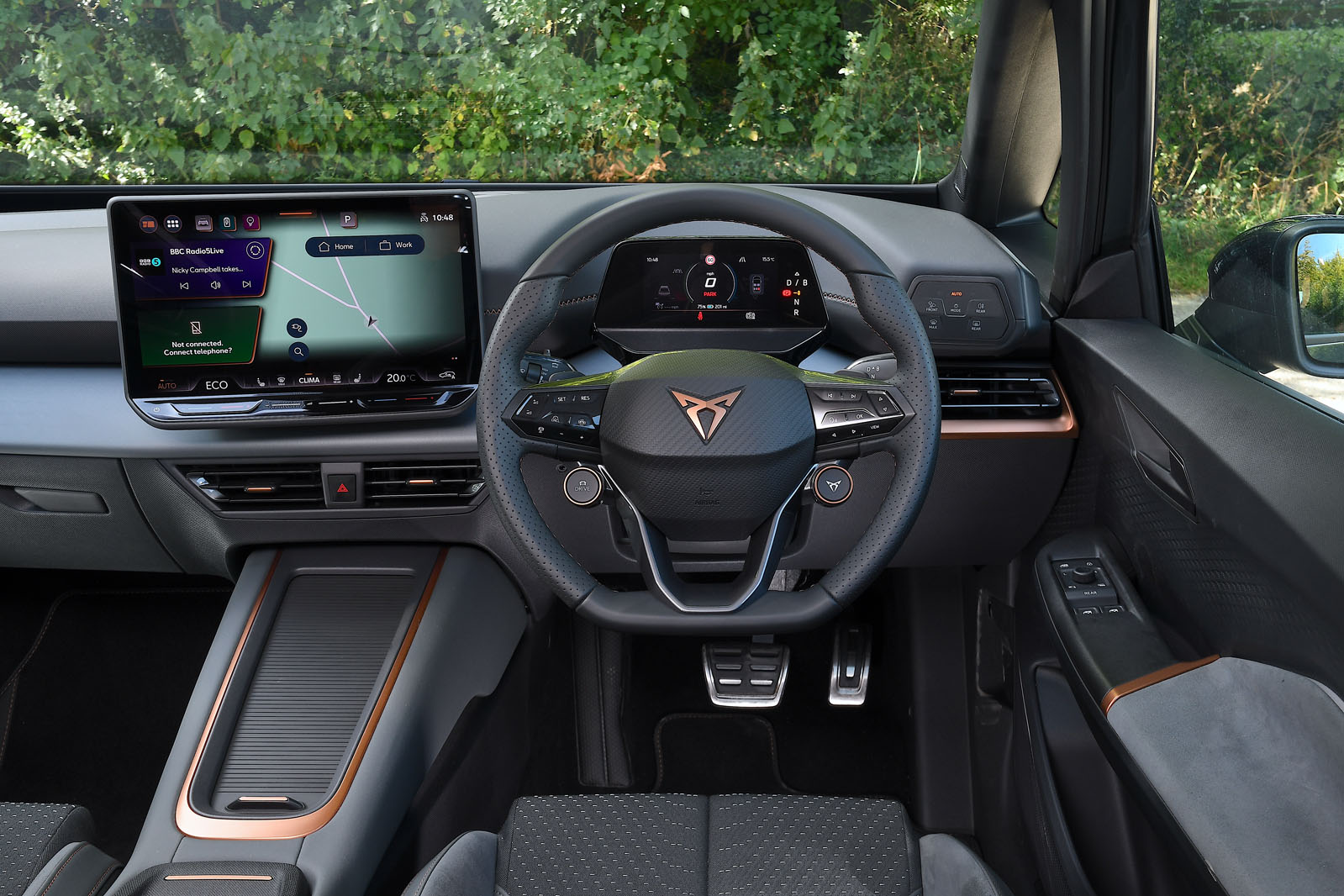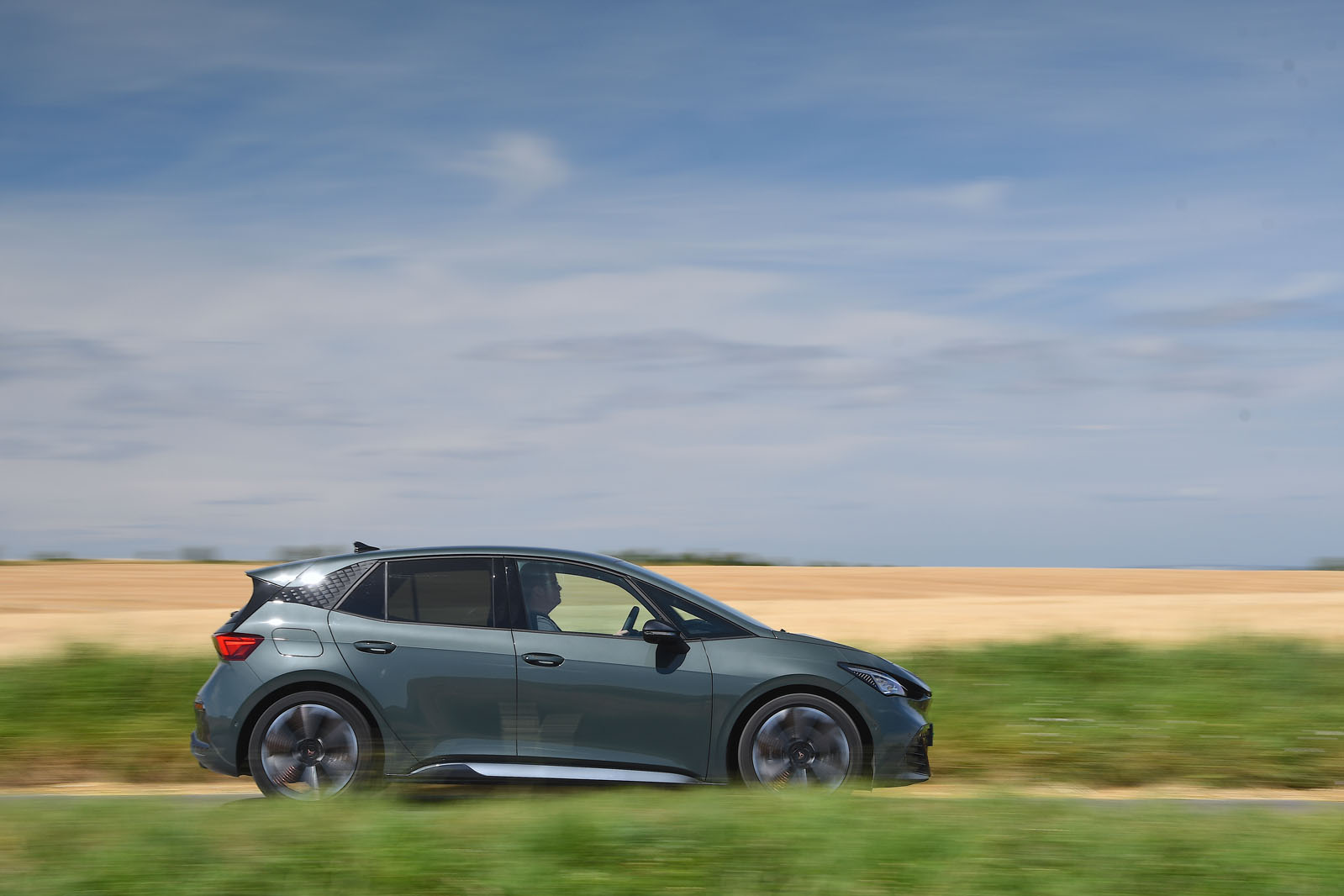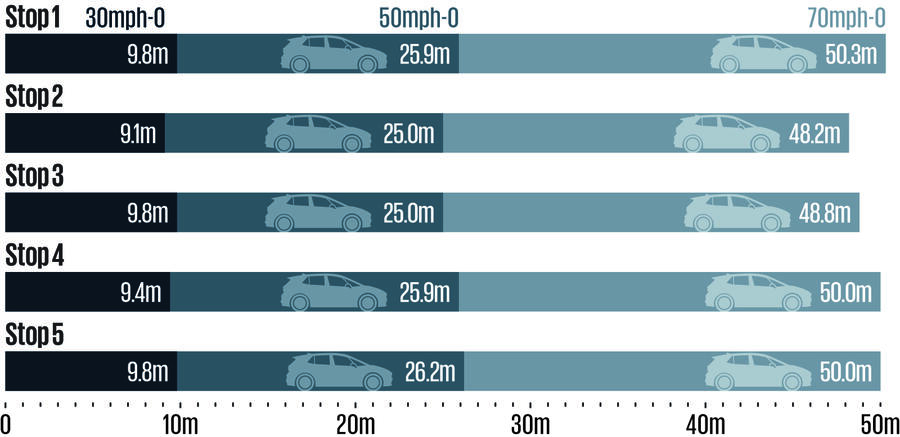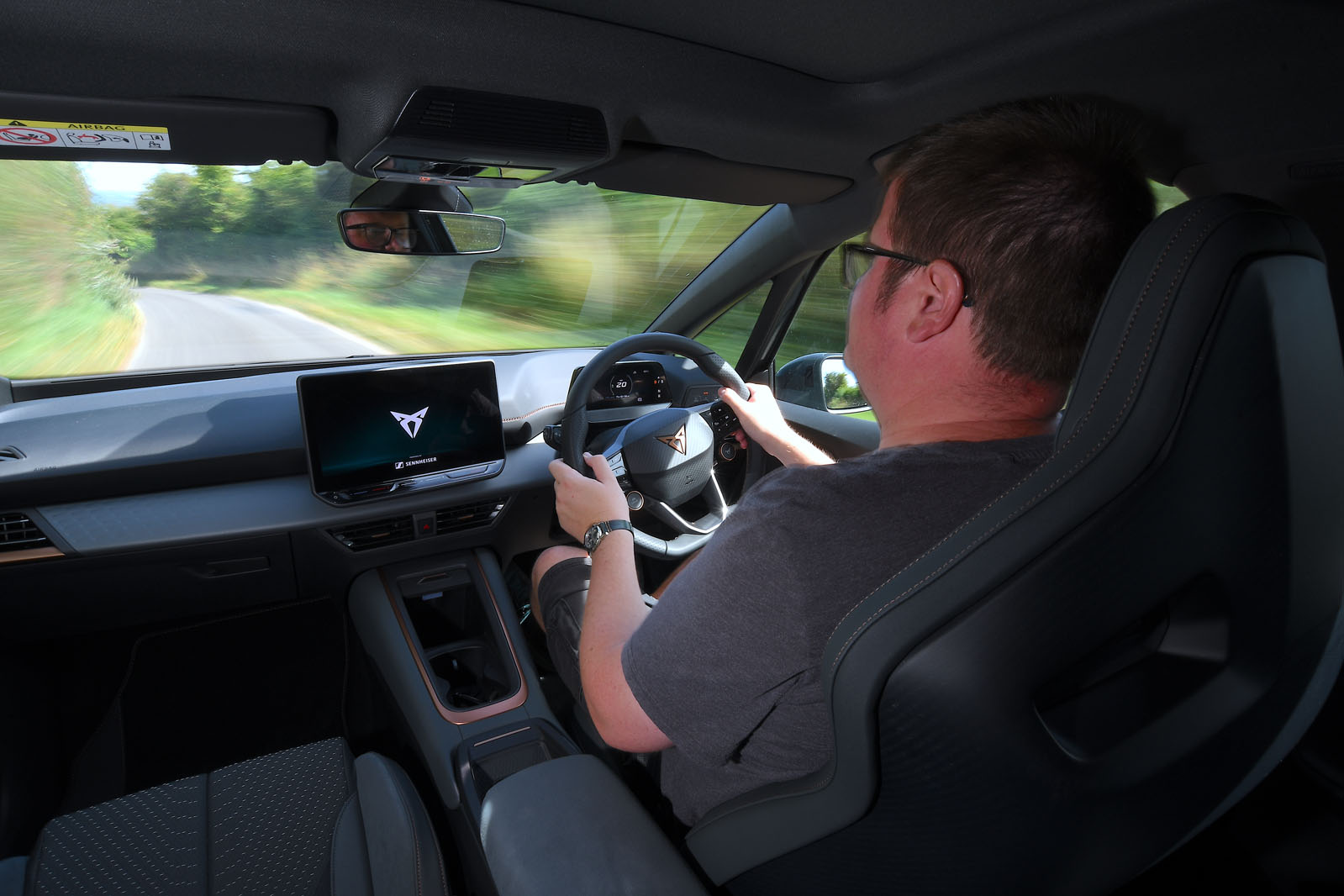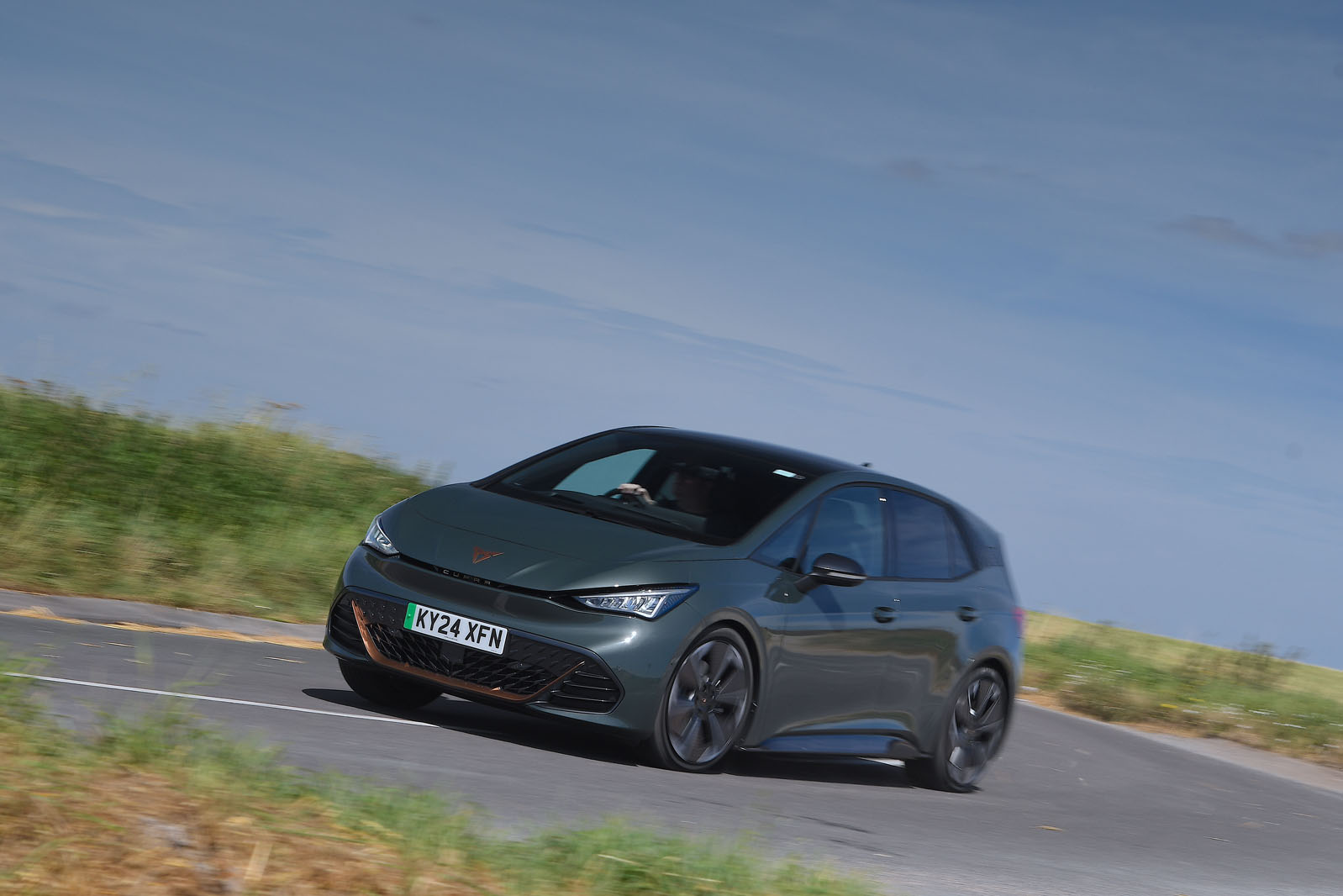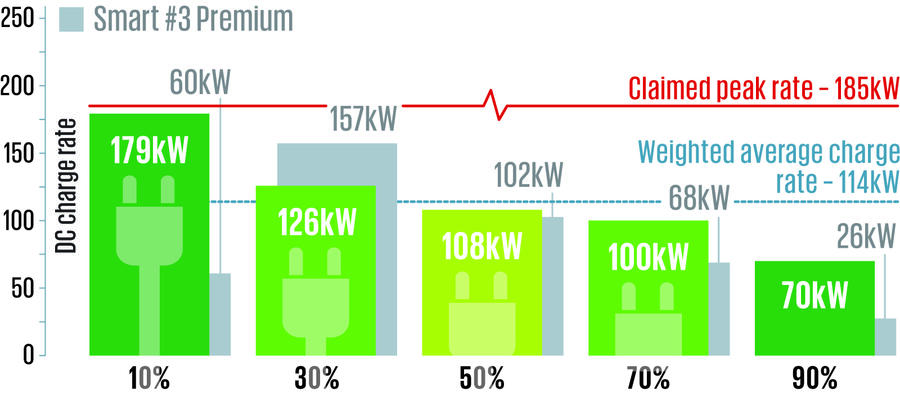The Cupra Born has won particular praise on these pages for the way it offers adult-appropriate, four-seat passenger space in a compact overall footprint. The Volkswagen ID 3 pulls off the same trick, of course, but the Born just goes that little bit further than its Zwickau line-mate for inviting cabin ambience and material appeal. The Born VZ maintains that lustre about the driving environment, though it doesn’t offer a great deal of its own extra sense of occasion.
New sports seats from Sabelt are fitted in the front. Dubbed Cup, they are made chiefly from a mix of a natural sustainable fibre called Seaqual and man-made recycled Dinamica suede. They are lighter than the Born’s standard seats and supposedly deliver a lower driving position.
If the latter is the case, our testers didn’t notice it – and our tape measure didn’t record any telling evidence of it either. However, there is little if anything wrong with the comfort afforded by the Born VZ’s driver’s seat, which has lots of scope for adjustability and useful support, is comfortable over longer acquaintance and is low enough to feel at least a bit sporty in any case.
Other developments include a new 12.9in multimedia display (to which we will come in a moment) and a pair of paddles for shifting brake energy regeneration, sprouting from the reverse of the steering wheel (the regular Born doesn’t have these, and they are a useful addition). There is also a ‘Smart Light’ LED strip running across the base of the windscreen that is used to help indicate direction of travel at T-junctions when a route is set into the navigation, or to draw the driver’s attention to hazards identified by the active safety systems (a bit of a novelty feature we would happily have done without).
Multimedia

The 12.9in infotainment touchscreen fitted to the VZ, offering just under 10% more display real estate than any other Born model had previously, doesn’t dominate the dashboard around it like Volkswagen’s own 15in installations in the latest Tiguan and Passat. It brings some worthwhile improvements to usability, though not all of the layout customisation advancements we have seen on other VW Group models, and we did experience some reliability issues with it.
Backlighting for the slider controls for audio volume and heater control at the foot of the screen has been added, although on our test car these sliders worked only sporadically. More concerningly, the infotainment system display crashed at one stage during a long day of testing on the road, going black for several hours, and returning to animation only after an extended ‘power down and reset’ process (the problem didn’t recur).
Cupra doesn’t seem to be so interested in bringing back multifunction physical controls for HVAC and multimedia systems in quite the way that Skoda and VW have demonstrated lately, and which we have applauded. But, although you can’t customise the selection of menu shortcuts displayed around the screen’s periphery as you can in recently launched VW-branded cars, the system itself remains easy enough to navigate, though it would still benefit from some kind of physical cursor controller. A swipedown menu layer, easily found from the home screen, grants access to deactivate the car’s ADAS features. Among them, only a Travel Assist semi-autonomous cruise control system that insists you place your hands just so on the wheel (at quarter to three) regularly annoys.
The Born’s extra-large colour head-up display (now standard fit from V2 grade) makes better use of augmented reality technology than other systems do, projecting navigation tulips into your line of sight as if they were hanging in mid-air above the roundabout exit or side road you’re driving towards.



